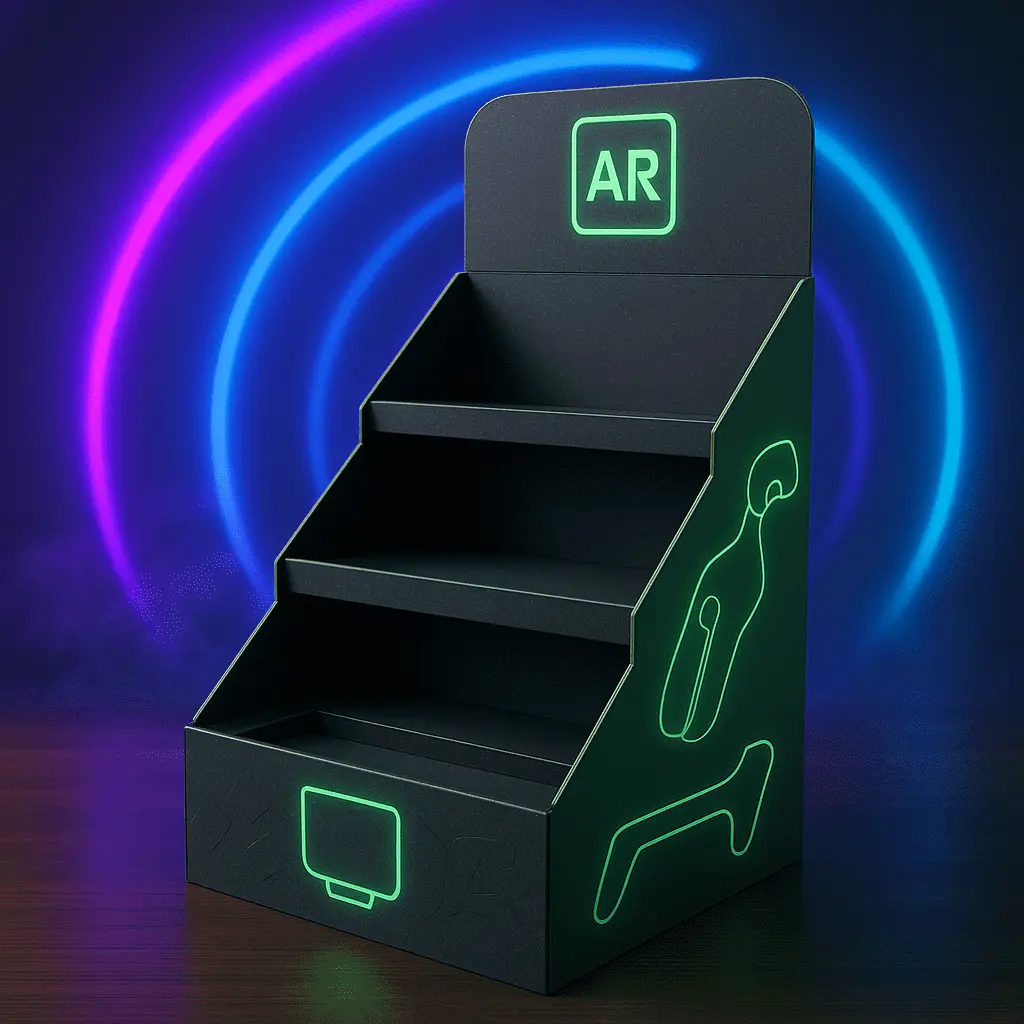The Psychology Behind Effective PDQ Display Design
Visual Appeal and Product Presentation
The efficacy of PDQ counter displays lies in their ability to capture attention through visually striking designs. Color psychology plays a pivotal role in this process, with vibrant hues like red and yellow often used to stimulate excitement and urgency. The arrangement of products within the display is equally crucial, adhering to the principles of visual merchandising to create an aesthetically pleasing and easily navigable layout.
Effective PDQ displays utilize tiered structures or innovative shapes to maximize visibility and accessibility. This strategic product placement ensures that items at various price points are showcased, catering to different customer preferences and budgets. By incorporating elements such as clear product information, eye-catching graphics, and sometimes even interactive features, these displays transform the checkout area into a mini-showroom, enticing customers to explore and purchase.
Triggering Impulse Purchases
The positioning of PDQ displays at the checkout counter taps into the psychology of impulse buying. As customers wait in line or prepare to complete their transaction, they are more susceptible to making unplanned purchases. This susceptibility is heightened by the carefully curated selection of products typically found in these displays – items that are often small, affordable, and possess a perceived immediate value or benefit.
Retailers and brands can leverage this psychological tendency by featuring products that complement customers' primary purchases or address common needs. For instance, a electronics store might use PDQ displays to showcase phone chargers or screen protectors near the checkout, appealing to customers who may have forgotten these essential accessories.
Creating a Sense of Urgency
Well-designed PDQ displays often incorporate elements that create a sense of urgency or exclusivity. Limited-time offers, "last chance" messaging, or highlighting products as "bestsellers" can prompt customers to make quick decisions. This urgency is particularly effective in the checkout environment, where customers are already in a purchasing mindset and may be more inclined to add one more item to their cart.
By rotating products regularly or featuring seasonal items, retailers can maintain a fresh and dynamic checkout experience. This not only keeps regular customers interested but also increases the likelihood of capturing the attention of new or infrequent shoppers, potentially converting them into repeat buyers.
Maximizing Sales Potential Through Strategic PDQ Display Placement
Optimizing Checkout Real Estate
The strategic placement of PDQ displays is paramount in maximizing their effectiveness. Counter space near the point of sale is prime real estate in retail environments, and PDQ displays are designed to make the most of this limited area. By utilizing vertical space and compact footprints, these displays can showcase a variety of products without impeding the checkout process or creating clutter.
Retailers often experiment with different placements to find the optimal position for their PDQ counter display. Some may opt for a centralized location that catches the eye of customers in multiple queues, while others might prefer to place displays at the beginning of the checkout line to capitalize on longer browsing times. The key is to ensure that the displays are visible and accessible without disrupting the flow of customer traffic.
Cross-Merchandising Opportunities
PDQ displays offer excellent opportunities for cross-merchandising, allowing retailers to suggest complementary products or introduce customers to new items they might not have considered. This strategic pairing of products can significantly increase the average transaction value and expose customers to a broader range of the store's offerings.
For example, a grocery store might use PDQ displays to showcase gourmet chocolates or artisanal snacks near the checkout, appealing to customers looking for a treat or last-minute gift. Similarly, a bookstore could use these displays to feature bookmarks, reading lights, or bestselling titles that align with popular genres or current trends.
Adapting to Customer Flow and Behavior
Effective PDQ display placement takes into account customer flow and behavior patterns within the store. By analyzing foot traffic and purchasing habits, retailers can identify optimal locations that align with natural pauses in the customer journey. This might include areas where customers tend to queue, spaces near self-checkout kiosks, or zones where shoppers typically pause to organize their items before reaching the cashier.
Additionally, the content and design of PDQ displays can be tailored to match the demographics and preferences of a store's typical clientele. For instance, a store catering to health-conscious consumers might use PDQ displays to showcase organic snacks or natural beauty products, aligning with their customers' values and interests.
Measuring and Optimizing PDQ Display Performance
Key Performance Indicators
To truly understand the impact of PDQ displays on customer engagement and sales, retailers must establish and monitor key performance indicators (KPIs). These metrics provide valuable insights into the effectiveness of display strategies and help identify areas for improvement. Common KPIs for PDQ displays include conversion rates, average transaction value, and product-specific sales uplift.
Retailers can utilize point-of-sale data to track the performance of items featured in PDQ displays compared to their performance when placed elsewhere in the store. This comparison allows for a clear understanding of the display's impact on sales and can inform decisions about which products are best suited for counter display promotion.
A/B Testing and Continuous Improvement
Implementing A/B testing strategies can significantly enhance the performance of PDQ displays. By systematically varying elements such as product selection, display design, or placement, retailers can gather data on which configurations yield the best results. This iterative process of testing and refinement ensures that PDQ displays remain effective over time, even as consumer preferences and market trends evolve.
For instance, a retailer might test different color schemes, product arrangements, or promotional messaging to determine which combination resonates most strongly with their customers. These insights can then be applied not only to improve existing displays but also to inform the design of future PDQ and in-store marketing initiatives.
Leveraging Customer Feedback
While quantitative data is crucial, qualitative feedback from customers can provide invaluable insights into the effectiveness of PDQ displays. Retailers can gather this feedback through various channels, including customer surveys, social media monitoring, and direct interactions with sales staff.
Customer comments can reveal preferences for certain types of products, opinions on display aesthetics, or suggestions for improvements. This feedback loop allows retailers to fine-tune their PDQ display strategies, ensuring they remain aligned with customer needs and expectations. Moreover, actively seeking and responding to customer input demonstrates a commitment to improving the shopping experience, which can foster loyalty and positive word-of-mouth.
Conclusion
PDQ counter displays have emerged as a powerful tool for enhancing customer engagement at the checkout, offering a multifaceted approach to increasing sales and improving the overall shopping experience. By leveraging psychological principles, optimizing placement strategies, and continuously refining performance through data-driven insights, retailers can maximize the impact of these displays. As the retail landscape continues to evolve, PDQ displays remain a versatile and effective means of capturing customer attention, driving impulse purchases, and ultimately boosting bottom-line results in an increasingly competitive marketplace.
Contact Us
Ready to elevate your checkout experience with custom PDQ displays that perfectly reflect your brand? At Guangzhou Huadu Fetching Color Printing and Packaging Co., Ltd., we specialize in creating fully customizable displays, tailored to your specific product range and marketing goals. Whether you need displays in unique shapes, sizes, or with personalized graphics and logos, we ensure each design aligns with your brand’s vision. Contact us today at support@fetchingprinting.com to explore innovative packaging solutions and elevate your retail environment with displays that captivate and engage customers.





